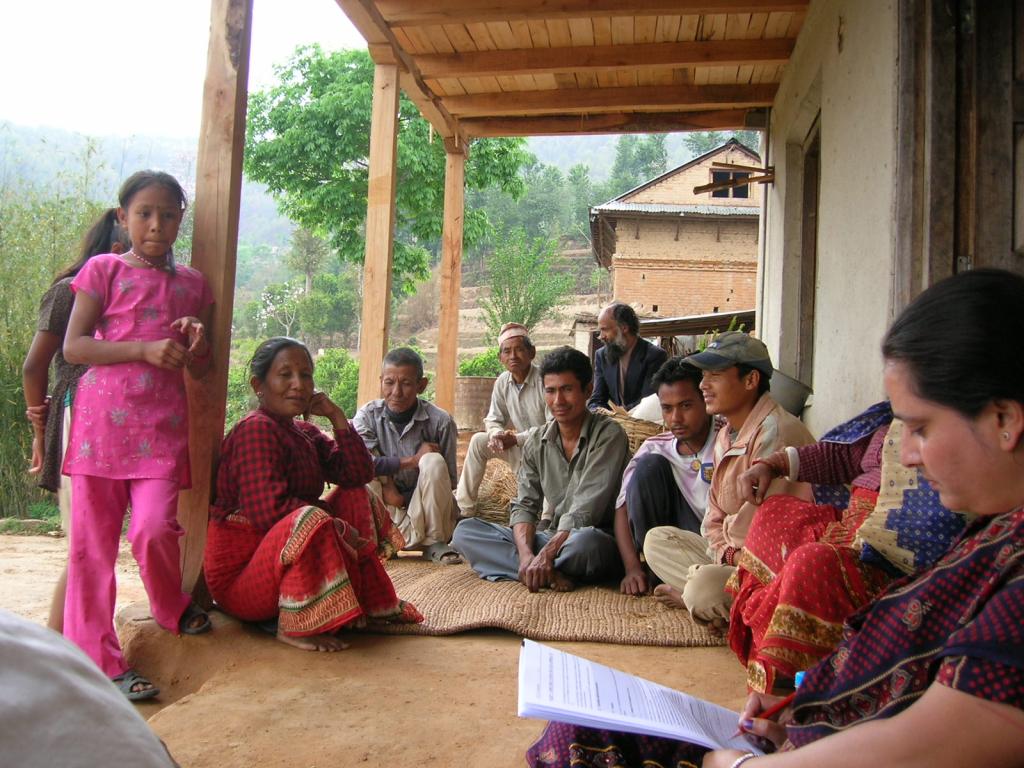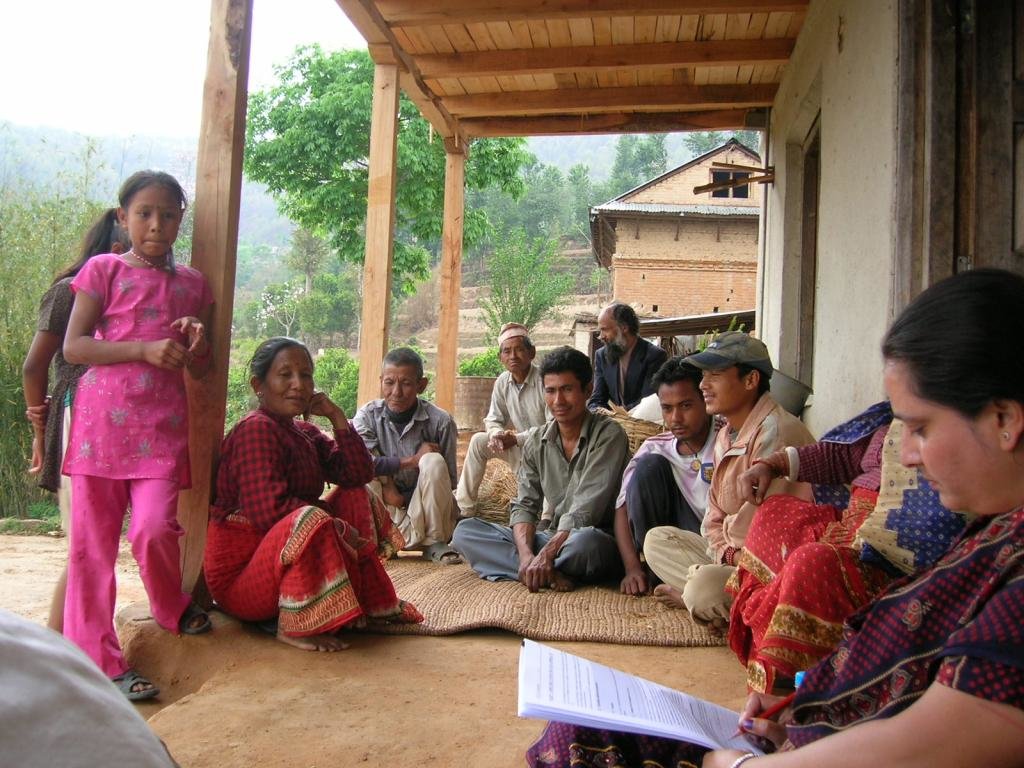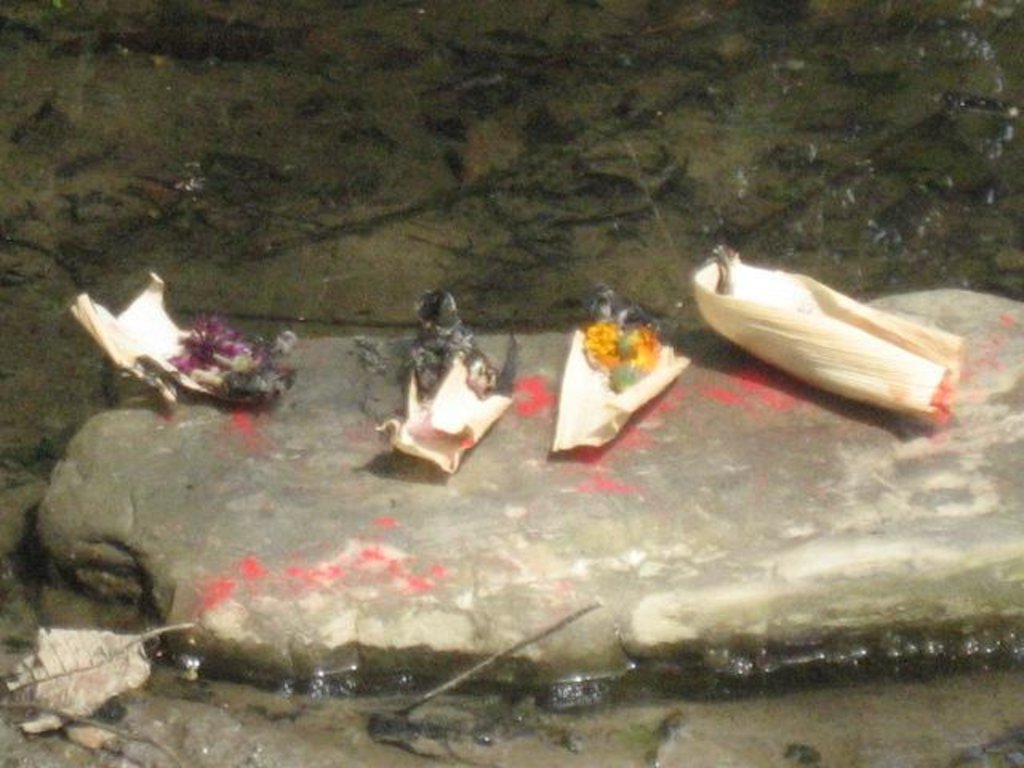Trans-generational approach for the protection of gully [Непал]
- Создание:
- Обновить:
- Составитель: Sabita Aryal
- Редактор: –
- Рецензент: Fabian Ottiger
Samudaik Kholsa Sanrakshan
approaches_2669 - Непал
Просмотреть разделы
Развернуть все Свернуть все1. Общая информация
1.2 Контактные данные специалистов и организаций, участвующих в описании и оценке Подхода
Название организации (-ий), содействовавших документированию/оценке Подхода (если применимо)
Kathmandu University (KU) - НепалНазвание организации (-ий), содействовавших документированию/оценке Подхода (если применимо)
Sarada Batase Village Development Committee (Sarada Batase VDC) - Непал1.3 Условия, регламентирующие использование собранных ВОКАТ данных
Составитель и ответственный/-ые специалист(-ы) согласны с условиями, регламентирующими использование собранных ВОКАТ данных:
Да
2. Описание Подхода УЗП
2.1 Краткое описание Подхода
The gully protection activities were initiationed and maintained by local people by using local materials based on their indigenous knowledge which supports to achieve more sustainable soil and water management.
2.2 Подробное описание Подхода
Подробное описание Подхода:
Aims / objectives: The aim of the approach is to reduce gully formation, protect the fertile agricultural land and minimise the effect of slipping down of the village.
Methods: Individual farm ownner along the side of the gully take the first responsibility of the maintannce. The Jagidol village community and the Newari Guthi of the region, and all Hindus who worship for the Nagdevata and Shiva devata along the stream bank take extra care and consiousness on gully protection. It is a collective efforts through social networks.
Stages of implementation: Ever on going. Basically individual initiation. If the problem is bigger in Community gathering and discussion takes place for planning of necessary activities. Material will be collected locally. Hands of implementation is called from the local area. This approach has been continued for over 200 years.
Role of stakeholders: The land wonner along the stream bank have major role, if the situation becomes terrific then only other give hands. Men are more active for the land protection during crisis such as flood, but in regular upkeeping and maintainance women are more active.
Other important information: Gully is much more in control in the upper region where the bioengeenering approache is applied; there it is more stable and mature. In the lower belt of the gullies it still is under the need of regular maintanace.
2.3 Фотографии, иллюстрирующие Подход
2.5 Страна/ регион/ место, где применялся Подход
Страна:
Непал
Административная единица (Район/Область):
Nepal
Более точная привязка места:
Kavre
2.7 Тип Подхода
- традиционная/ местная система землепользования, используемая коренным населением
2.8 Каковы цели/ задачи Подхода
The Approach focused mainly on other activities than SLM (Activities of religious, cultural and biological importance)
To protect agains gully formation. To protect under the soil loss. To protect the land from flood. Protection of source of water for dry season. To prevent landslides. To prevent the slidding of the hill towards the gully. To improve the well being of the farm and farmer.
The SLM Approach addressed the following problems: Lack of institutional development. The group is not registered anywhere in a conservation team or organisation. Thus getting no technical and financial support from government or non-governmental organisations. The research done by the community is not documented, it is trasmitted by mouth to mouth. To manage the gully labour shortage in the village is a rwal constraint.
2.9 Условия содействующие применению Технологии/ Технологий в рамках Подхода или затрудняющие его
Социальные/ культурные/ религиозные нормы и ценности
- затрудняют
situation of the temple nearby the gully and worship place for 'Nag devta'( snake God)
Treatment through the SLM Approach: mutual discussion and decision
Наличие/ доступность финансовых ресурсов и услуг
- затрудняют
to buy implementation tools
Treatment through the SLM Approach: use of local material, call for kind donations within the community and if possible, cash from the community
Институциональные условия
- затрудняют
no linking of the act with the organisation
Treatment through the SLM Approach: self management
Нормативно-правовая база (землевладение, права на земле- и водопользование)
- содействуют
The existing land ownership, land use rights / water rights greatly helped the approach implementation: The land in the gully side is owned by individual farmers. The water resource available next to the farm is also used by the individual farmer. Thus the managing of the gully, stopping further erosion etc. is also in responsibility of the owners. If a problem increases at a certain site of an individual farmer, this means his land will be more affected than others, he takes the initiative for getting help from availabe sources of the village community
- затрудняют
land owner is the most responsible
Treatment through the SLM Approach: the land owner is convined by other villagers to maintain the gully near by his plot
Осведомленность в области УЗП, доступность технической поддержки
- затрудняют
no complete awarness of the conservation acts but continued as it is transmitted from generation to generation
Treatment through the SLM Approach: new methods and material are used by learning from other program or project implemented in the neighbourhood areas
Объем работ, доступность рабочей силы
- затрудняют
During the busy parts of the farming calendar there is little or no labour available for SLM projects.
Treatment through the SLM Approach: SLM projects are scheduled so that they coincide with periods of less farm labour stress, i.e. dry season.
другие
- затрудняют
Conservation measures generate more time during the busy farming period of monsoon
Treatment through the SLM Approach: extra hands will be called from the community
3. Участие и распределение ролей заинтересованных сторон
3.1 Заинтересованные стороны, участвующие в реализации Подхода и их роли
- местные землепользователи/ местные сообщества
The people who own the land near by the stream and the village as a whole. The land owners and elderly persons of the village
It is considered as a heavy work and therefore carried out by young men. Men are involved during the problem time. Women are regularly involved all around the year for the maintanance.
- государственные власти (отвечающие за планирование или принятие решений)
- международные организации
- near by villager or practitioner
Если участвовало несколько заинтересованных сторон, назовите ведущую организацию:
The old man and women in community take initiative to explain best methdos.Young men on the basis of their observation around the other similar problem and solution choose the option and implement. Women member maintain the gully during the farming time.
3.2 Участие местных землепользователей/ местных сообществ на разных стадиях реализации Подхода
| Участие местных землепользователей/ местных сообществ | Перечислите участников и опишите их вовлеченность | |
|---|---|---|
| инициирование/ мотивация | самоорганизация | The villagers realised that they needed to protect the land to increase the amount of available farming land and to protect their village from landslides. |
| планирование | самоорганизация | The villagers plan various counter measures during the dry season, so that when the monsoon come their land would be protected |
| выполнение | самоорганизация | The land users implemented the protective measures using local materials . |
| мониторинг/ оценка | самоорганизация | The build protective measure are maintained and repaired from time to time. |
| Research | нет | no documentaion is made besides our study |
3.4 Принятие решений по выбору Технологии/ Технологий УЗП
Укажите, кто принимал решение по выбору применяемой Технологии/ Технологий:
- исключительно землепользователи (по собственной инициативе)
Поясните:
The land users have been implementing these technologies since many years. They have developed their own methods and selection of technology and material by trial and error. They have used intuitive reasoning for excellence.
Decisions on the method of implementing the SLM Technology were made by by land users* alone (self-initiative / bottom-up). by observing the best resulting methods and material. By learning from the nearby places where the technology is selected under the guidance of conservation specialists.
4. Техническая поддержка, повышение компетенций и управление знаниями
4.1 Повышение компетенций/ обучение
Проводилось ли обучение землепользователей/ других заинтересованных лиц?
Да
Тип обучения:
- в ходе работы
- обмен опытом между фермерами
4.3 Институциональная (организационная) поддержка
В ходе реализации Подхода были ли организованы новые институциональные структуры или поддержаны уже существующие?
- нет
4.4 Мониторинг и оценка
Являются ли мониторинг и оценка частью Подхода?
Да
Комментарии:
bio-physical aspects were regular monitored by land users through observations; indicators: No formal reporting was ever made, but evolution of the approach were continually observerd.
technical aspects were regular monitored by land users through observations; indicators: No formal reporting was ever made, but evolution of the approach were continually observerd.
Continuity of the approach aspects were regular monitored by land users through observations; indicators: No formal reporting was ever made, but evolution of the appraoch were continually observerd.
There were few changes in the Approach as a result of monitoring and evaluation: The insecurity factor of the land user is combined with religious aspects such as the development of temple
There were few changes in the Technology as a result of monitoring and evaluation: New and recent material and technology is emerging in the lower area were the practice is relatively young
5. Финансирование и внешняя материальная поддержка
5.1 Годовой бюджет мероприятий по УЗП в рамках Подхода
Если точный годовой бюжет неизвестен, укажите примерный диапазон затрат:
- < 2000
Комментарий (например, основные источники финансирования/ ключевые доноры):
Approach costs were met by the following donors: local community / land user(s) (There has been no external aid): 100.0%
5.2 Финансирование и внешняя материальная поддержка, предоставляемая землепользователям
Предоставлялась ли землепользователям финансовая/ материальная поддержка для применения Технологии /Технологий?
Нет
5.3 Субсидии на отдельные затраты (включая оплату труда)
- нет
Если труд землепользователя был существенным вкладом, укажите, был ли этот вклад:
- добровольный
Комментарии:
Full costs to land users
5.4 Кредитование
Предоставлялись ли в рамках Подхода кредиты на мероприятия УЗП?
Нет
6. Анализ влияния и заключительные положения
6.1 Влияние Подхода
Сумел ли Подход помочь землепользователям внедрить и поддерживать технологии УЗП?
- Нет
- Да, немного
- Да, умеренно
- Да, существенно
Land slide and food shortages are reduced, soil loss is prevented. The sliding of the hill and community habitation is improving.
Сумел ли Подход расширить возможности социально и экономически уязвимых групп?
- Нет
- Да, немного
- Да, умеренно
- Да, существенно
Сумел ли Подход разрешить правовые проблемы землевладения/ землепользования, препятствующие использованию технологий УЗП?
- Нет
- Да, немного
- Да, умеренно
- Да, существенно
Community action will be not taken unless the individual farmer takes his initiative to solve the problem. Since it is individual farm it is thought to be managed by the land owner particularly
Did other land users / projects adopt the Approach?
- Нет
- Да, немного
- Да, умеренно
- Да, существенно
Other farmers from neighbouring valleys have seen the SLM measures implemented in the gully and have adopted them in their own region.
Did the Approach lead to improved livelihoods / human well-being?
- Нет
- Да, немного
- Да, умеренно
- Да, существенно
With increase in water ans soil conservation, there is provided increased arable land for quality crop production, thus also improves health and well being in the valley
Did the Approach help to alleviate poverty?
- Нет
- Да, немного
- Да, умеренно
- Да, существенно
The production of the farm is now sufficient for more months then it was before. As a whole the village has benefited from the approach increasing the wealth of the village.
6.2 Основные причины, побуждающие землепользователей внедрять УЗП
- рост продуктивности
Creating better soil conditions and water management for irrigation
- рост прибыли (доходности) и рентабельности
With more farmland and water for irrigation more profits can be obtained.
- экологическая сознательность
When the farmers cleared too much land they realised that they needed to implement SLM measures
- well-being and livelihoods improvement
With better drinking water the community's well-being improved.
- Risk minimisation
The risk of flooding and runoff of farm and soil, landslide is major threat to them.
6.3 Долгосрочная устойчивость мероприятий в рамках Подхода
Могут ли землепользователи самостоятельно (без внешней поддержки) продолжать применение того, что было реализовано в рамках Подхода?
- нет уверенности
Если нет или нет уверенности, объясните почему:
The approach needs subsidies or external support to sustain it due to shortage of local labor volunteers. With funding support the village can purchase better materials to create longer lasting structures.
6.4 Сильные стороны/ преимущества Подхода
| Сильные стороны/ преимущества/ возможности по мнению землепользователей |
|---|
| Remarks and suggestion of nearby land users and community persons are taken into serious consideration (How to sustain/ enhance this strength: Learning of society to respect and regard others suggestion. Morale value) |
| Сильные стороны/ преимущества/ возможности по мнению составителя или других ключевых специалистов |
|---|
| Community network and individual farm ownership, self farming by land owner, most of the landowner reside at the same hill (How to sustain/ enhance this strength: Discourage migration of farming community to nearby city) |
6.5 Слабые стороны/ недостатки Подхода и пути их преодоления
| Слабые стороны/ недостатки/ риски по мнению землепользователей | Возможные пути их преодоления/снижения? |
|---|---|
| Migration of farmer for better job. Commencement of new owner. Comming of a brick making factory instead of farming. | Government should give more rules for cultivable land. |
| Слабые стороны/ недостатки/ риски по мнению составителя или ответственных специалистов | Возможные пути их преодоления/снижения? |
|---|---|
| No proper and formal planning. No connection with authority and funding organisations | Formalisation of the group for conservation practices |
7. Справочные материалы и ссылки
7.1 Методы сбора/источники информации
- выезды на места, полевые обследования
- опросы землепользователей
Ссылки и модули
Развернуть все Свернуть всеСсылки
Нет ссылок
Модули
Нет модулей





